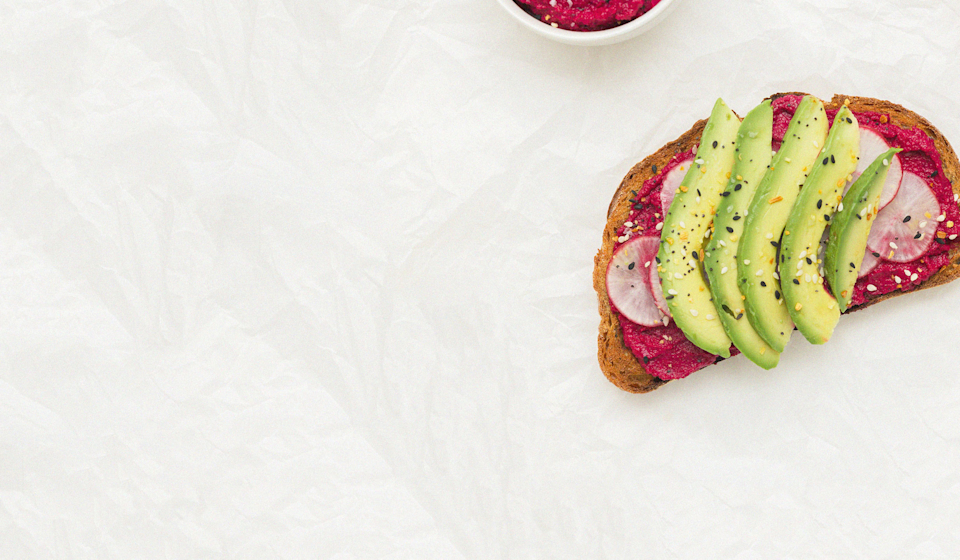If you’re scratching your head, we feel you—with so many options on the market, it can be tricky to nail down the specifics. With that in mind, we asked dietitians to share what factors they look for in a balanced, plant-based protein powder. (Psst—our new Essential Protein ticks a lot of the boxes.)
What to Look For in a Plant-Based Protein Powder
1. Start by considering the quality of protein.
While it's easy to get caught up with the amount of grams to look for (which is still important, to be fair), it's crucial that we also look at the amino acid profile. As a reminder, amino acids are the building blocks of protein—when we metabolize protein, our body uses these amino acids for various functions. There are nine "essential" amino acids that the can't produce on its own, meaning we have to get them from food. When a food contains all nine essential amino acids in adequate amounts, it's considered to be a "complete" protein.
The caveat? "Most plant-based protein sources are deficient in one or more of the essential amino acids, so they are considered 'incomplete,'" says Arianne Vance, MPH, Ritual's Principal Scientist. Which is why when shopping for a plant-based protein powder, it's important to look out for a couple of things. For one, look for a product that specifically states it contains a "complete amino acid profile." This is typically accomplished by combining more than one complementary plant-based proteins—like brown rice and pea protein, for example. If the protein powder features only one plant-based protein source, you'll want to see that it's fortified with the specific amino acid it falls short on. (For example: Our Essential Protein features pea protein, complemented by the amino acid l-methionine to make a complete amino acid profile.)
In other words, both quality and quantity are important here. And on that note…
2. Look at the grams of protein, and consider your daily needs.
When it comes to your nutrient intake, we'll always recommend a "food first" approach—that is, aiming to get your fill of macronutrients (carbs, protein, and fat) and micronutrients (vitamins and minerals) primarily through a balanced diet. But no matter how "well" we eat, gaps can still happen—which is why it's still good to understand the recommended dietary allowance (or RDA) to shoot for, and consider supplementing accordingly.
For protein, this can vary slightly based on your life stage or activity level—but a good rule of thumb to calculate your own protein RDA is .8g of protein per kg of bodyweight. (1)
3. Make sure it’s allergen-friendly.
Since many plant protein powders blend a variety of different proteins, Brittany Modell, MS, RD, CDN, of Brittany Modell Nutrition and Wellness reminds us that it’s essential to check the ingredient list and ensure that it doesn’t include anything that might be an irritant. (Essential Protein is free of gluten and other major allergens, including nuts.)
4. Opt for traceable, real food ingredients.
Like many packaged foods, protein powders can contain questionable fillers and other additives. That’s why Modell advises taking a skeptical look at the ingredient list. “Look for simple and recognizable ingredients that are made up of real food,” she says. A traceable supply chain is always a plus—and at Ritual, it's our M.O. (You can take an x-ray look at how our protein is made and meet our suppliers here.)
5. Avoid added sugars and artificial sweeteners.
Krista King, MS, RDN, LDN, of Composed Nutrition recommends avoiding protein powders with added sugars or artificial sweeteners, which can detract from the nutritional quality. Our protein is sugar-free†—we formulated it with Reb-M, a molecule derived from fermented sugarcane. (It mimics the sensory experience and sweetness of sugar without a bitter aftertaste, which is pretty cool.)
†Not a reduced calorie food
How to incorporate plant-based protein powder into your daily routine
The obvious choice might be a smoothie, and for good reason: It’s convenient and endlessly customizable from a flavor perspective. Add in your favorite fruits and veggies, from bananas and berries to spinach or kale. Elevate your blend with peanut butter, chai, cacao, mocha, turmeric, vanilla or cinnamon. (Hungry yet?)
But protein shakes are not the only way. Modell suggests also adding a protein powder into pancakes, oatmeal or baked goods for a boost of protein.*











